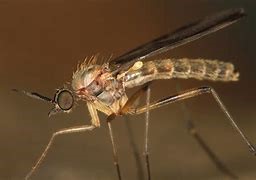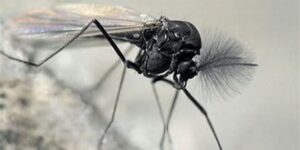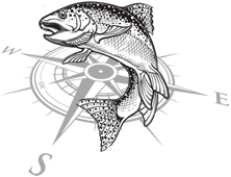The Midge Adult
Don’t confuse the Midge adult with a Midge Pupa. Both are important to fly anglers and both are a stage in the life cycle of the aquatic insect Chironomidae family order Diptera. A few anglers call them Chironomids but most just call them Midges. They come from the order Diptera where they are related to split wing aquatic insects like Mosquitos and Crane Flies (Daddy long legs, Mosquito Hawks). The Midge adult is extremely important to fly anglers because the Midge has a complete metamorphosis and can emerge or hatch 365 days of the year.
This ability for the Midge to emerge or hatch all year long makes the Midge the most important fly in your fly box during the winter. There may be a plethora of aquatic insects that hatch during the Spring, Summer and Fall months for trout to feed on and keep us fly anglers busy. However these Mayflies, Caddis flies and Stoneflies are not hatching during the Winter. This is where the Midge becomes king. Because the Midge will hatch year round it soon becomes the only aquatic insect left for trout to feed on during the Winter. This lovely act of science can make fly fishing fairly simple for anglers during the winter. If you see trout rising, the odds are in your favor these trout are feeding on Midges. So trying to figure out what those trout in front of you are feeding can be a no brainer. They must be feeding on Midges.
Winter. This lovely act of science can make fly fishing fairly simple for anglers during the winter. If you see trout rising, the odds are in your favor these trout are feeding on Midges. So trying to figure out what those trout in front of you are feeding can be a no brainer. They must be feeding on Midges.
If you buy into that logic then you can say Winter fly fishing is easier to do than it is in Spring, Summer or Fall. When you see trout rising or feeding in the Winter they must be feeding on Midges. The Golden Rule in dry fly fishing is if you see fish rising they must be feeding on an aquatic insect. Figure out what that aquatic insect is and then give it to them. This is where the adult Midge comes in. In the late Fall, Winter and Spring trout feeding on Midges will be eating either the Midge pupa or the Midge adult. At the rivers surface, just under the surface an emerging Midge pupa will struggle to break the surface film so it can crawl out of its pupal body to become a winged adult. Once this has happened the adult Midge does not just fly away but will skitter along the surface or stay stationary for a noticeably short period. It’s during this time that the adult Midge is vulnerable.
During an intense Midge emergence thousands upon thousands of Midges are hatching. That means there are quite a fe

w Midges on the surface. Some trout will ignore feeding on the Midge Pupa to instead feed solely on Midge adults. During a Midge hatch I’m usually casting a Midge pupa at rising trout. When these feeding trout ignore my Midge pupa pattern I usually will progress to another pattern and so one. Out of frustration I’ll eventually tie on a Midge adult and wham I’ve got a trout. Even though a Midge pupa pattern is the common fly to use during a Midge hatch, not having a Midge adult pattern to compliment the Midge pupas in your fly box can be harmful to your catch rate.
In the final analysis it’s pretty fair to say that the Midge is a pretty important aquatic insect for trout to live on during the Winter. For you not to have Midge adult patterns in your fly box is the same as not carrying a spare tire in your vehicle. You may not need it but it’s there if you do.

